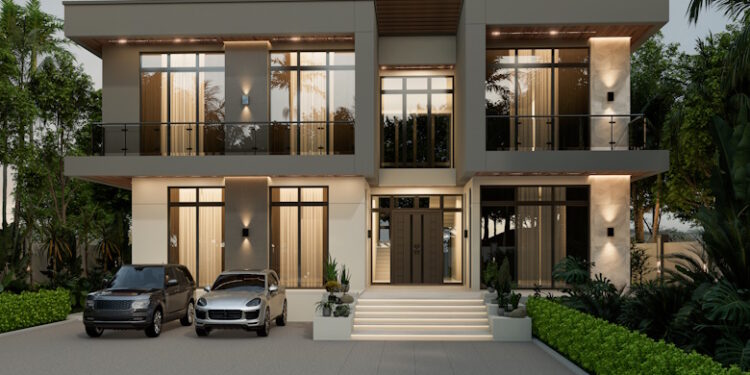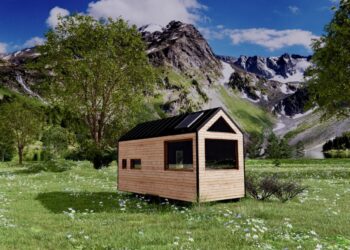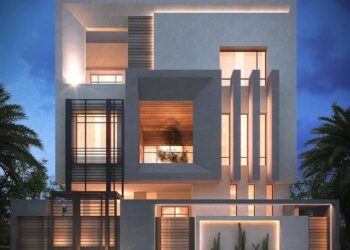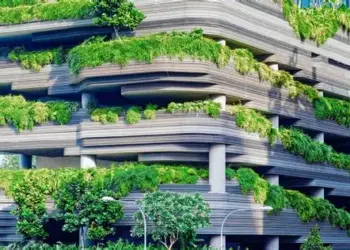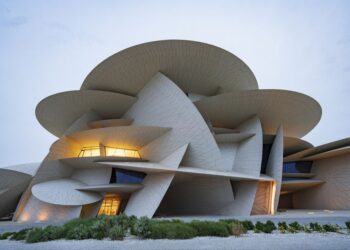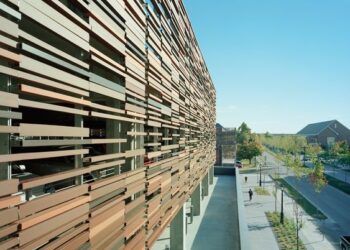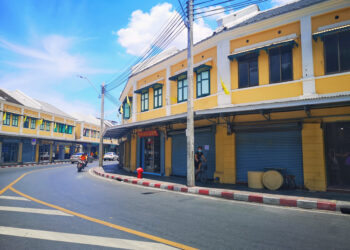Architectural Design: Modern, Simple and Futuristic Housing
Residential architecture continues to evolve over time to meet the ever-changing trends and needs of society. In modern society, residential architectural design is gradually changing from a functional aspect to a concept that considers aesthetics, comfort, and sustainability. One of the design trends that is still in demand is modern, minimalist, and futuristic architecture. These concepts not only reflect the changing times, but also show the appearance of housing that provides comfortable and efficient spaces. In this article, we will take a closer look at architectural design that uses a modern, minimalist, and futuristic approach, and see how these concepts can be incorporated into today’s homes.
Contemporary Architectural Design: Harmony between Nature and Technology
Modern architectural design focuses on creating open, comfortable, and functional spaces by utilizing natural elements and cutting-edge technology. Modern style avoids excessive decoration and focuses more on simplicity and functionality. Characteristics of modern design include clean, straight lines, large open spaces, and maximum use of natural light. Modern design features:
1. Use of natural materials : Modern designs often use natural materials such as wood, stone, and concrete to create a more organic and natural feel. These materials are used to reduce the use of decorative elements and reinforce the impression of simplicity.
2. Open and connected to nature : The modern design concept emphasizes a strong connection between the inside and the outside. Natural light enters the house through large glass doors and large windows, creating a sense of spaciousness and connection to nature.
3. Leverage Technology : Modern designs often integrate technology into various aspects of the home, including smart lighting systems, heating, ventilation, air conditioning systems, and smart home systems that can be controlled remotely.
Minimalist architectural design: Focus on function and simple beauty
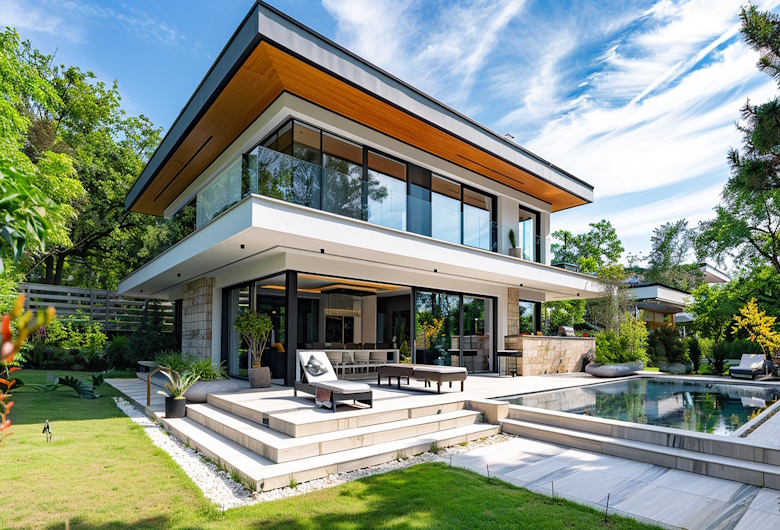
Minimalist design is one of the most influential design trends in residential architecture. This concept focuses on simplicity, reducing unnecessary elements, and efficient use of space. Minimalist design primarily focuses on creating spaces that are clean, organized, and uncluttered. Characteristics of simple design:
1. Practical and simple furniture : In minimalist design, furniture tends to have simple and practical shapes. Every object in the house has a clear purpose, and nothing in the house is just for decoration.
2. Neutral and Monochromatic Colors : Minimalist designs often use a neutral color palette like white, black, and gray, or natural colors like wood to create a calm and organized impression.
3. Open and bright spaces : Minimalist design homes tend to have open layouts with few partitions between spaces. Natural light is a priority, with large windows and transparent materials used to let in as much light as possible.
Forward-looking architectural design: Innovation in every detail
Forward-thinking architectural design combines innovative elements with cutting-edge technology to create living spaces that seem like they came straight from the future. The design focuses on technological advancements, sustainability, and the courage to experiment with new concepts that are not bound by the boundaries of conventional design. Future design features:
1. Unique shapes and structures : Futurist architecture is known for its use of unusual geometric shapes, including smooth curves, asymmetrical structures, and nature-inspired designs. The buildings are sharp and bold, making them look more natural and appealing.
2. Technology Integration : Smart technology is an essential element of future design. Smart home systems integrated with Internet of Things (IoT) devices allow residents to control nearly every aspect of their home, from lighting to security and comfort.
3. Use of innovative materials : Materials such as reflective glass, lightweight concrete, and environmentally friendly and durable materials are often used in forward-looking designs. These materials are not only aesthetically pleasing, but also help increase the energy efficiency of the home.
Combining modernity, simplicity and futurism: creating the perfect home
Combining modern, minimalist, and futuristic design elements can create a home that not only reflects a forward-thinking lifestyle, but also provides comfort and efficiency. Here are some ways to combine these concepts.
1. Open space with dual functions
Modern, minimalist home designs often focus on open spaces, allowing residents to organize their spaces to their own needs. With future technology, these spaces can be transformed into multi-functional spaces that can be used for a variety of activities, such as workspaces, entertainment rooms, and family rooms.
2. Use sustainable materials
To balance modernity, simplicity and futuristic design, it is important to use eco-friendly and sustainable materials. For example, using eco-friendly concrete, solar panels or recycled materials to create an energy-efficient and environmentally friendly home.
3. Smart Home Technology
The integration of smart home technology greatly supports these three design styles. Automation systems allow residents to control lighting, temperature, and security with a single touch. Technologies such as voice control, motion sensors, and cloud-based security monitoring bring convenience and convenience to everyday life.
4. Proper lighting
Lighting plays an important role in modern, minimalist and futuristic design. To create a spacious and bright space, natural light should be used as much as possible. In addition, LED lighting and smart lighting systems can be used to create an atmosphere that suits the needs of the residents.
The Benefits and Challenges of Modern, Minimal, and Futuristic Design
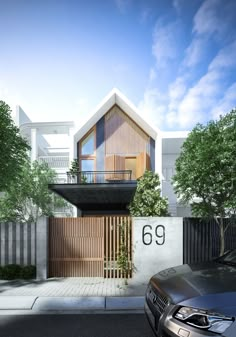
Interior design is constantly evolving and is influenced by changing trends, technology, and people’s aesthetic preferences. There are three design styles that are very popular right now: modern design, minimalist design, and futuristic design. Each method has its own characteristics, advantages, and implementation challenges. Here are the advantages and challenges of modern, minimalist, and futuristic design. This can help you choose the right style for your home or commercial space.
1. Benefits
Energy Efficiency : Using sustainable materials and smart technologies can help reduce energy consumption, contributing to long-term cost savings.
Comfort : Open spaces and simple designs can create a calm and comfortable atmosphere for residents.
Beauty and Aesthetics : Combining modern, minimalist and futuristic design can create an elegant, clean and very aesthetically pleasing home.
2. Challenges
Higher initial costs : Using advanced materials and technologies may require higher initial investments.
Care and Maintenance : Some future items or smart technologies require maintenance and updates to keep them functioning properly.

